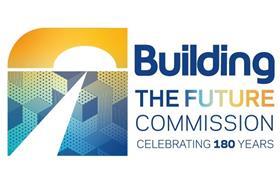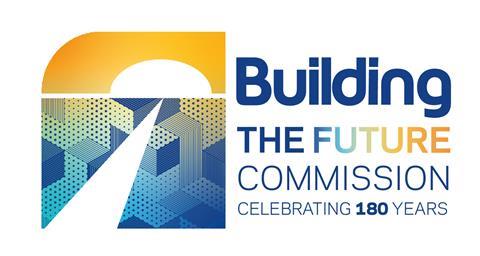Technology will move us away from the traditional resolution of disputes through the court system, writes Simon Tolson

Conventionally adjudication, arbitration, litigation and neutral assisted mediation have been the go-to places to sort out disputes for many years. Mediation is a flexible process conducted confidentially in which a neutral person actively assists the parties in working towards a negotiated agreement of a dispute or difference, with the parties in ultimate control of the decision to settle and the terms of resolution.
But in recent years judicial involvement in early neutral evaluation, financial dispute resolution appointments and dispute resolution hearings is proving a highly effective alternative to traditional litigation. These are, of course, available free to the parties.
Digitalisation of the court system in England and Wales has been accelerated by the pandemic, and progress towards an integrated system for civil, family and tribunals cases is now тАЬwell advancedтАЭ. There is also immense scope for technology to help with the efficiency, speed and scale of court processes.
It is true that inside the courts, judges encourage and prompt parties towards these aternative dispute resolution (ADR) methods, although these days most practitioners are experienced and trained in the process.
No doubt the spectre of cost penalties against those who unreasonably refuse ADR will play an important part in that process. Continued and, if possible, increased funding and support for the Small Claims Mediation Scheme is absolutely vital in lower value disputes.

The contemporary development of civil mediation in the UK can be tracked back to 1994 when Lord Woolf was appointed to review the rules and procedures of the civil courts in England and Wales.
The primary aim of the review was to improve access to justice and reduce costs. After conducting the review, Lord Woolf recommended the use of ADR including mediation in his 1995 Access to Justice Interim Report and stated that тАЬin deciding on the future conduct of a case, the judge should be able to take into account the unreasonable refusal to attempt ADR. Additionally, the court should take into account whether the parties behaved unreasonably in the course of ADRтАЭ.
But the ADR process more often comes out of pending litigation and arbitration and at the mid-to-end of such process. There is a lot to be said for having it much earlier.
In January 2021, the Master of the Rolls asked the Civil Justice Council to report on the legality and desirability of compulsory ADR. The report concluded that mandatory (alternative) dispute resolution is compatible with Article 6 of the European Human Rights Convention and is, therefore, lawful.
Chair of the Judicial/ADR Liaison Committee and lead Judge for ADR, Lady Justice Asplin, said: тАЬThis report addresses questions which are central to the shape and design of dispute resolution in the twenty-first century. We have concluded that ADR can be made compulsory, subject to a number of factors. More work is necessary in order to determine the types of claim and the situations in which compulsory ADR would be appropriate and most effective for all concerned, both in the present system and in relation to online justiceтАЭ.
The ADR process more often comes out of pending litigation and arbitration and at the mid-to-end of such process. There is a lot to be said for having it much earlier.
So, what is cutting edge and going on in this space? There are conferences these days on the Future of Technology in ADR (like Future of Technogy in Abitration 2022). This was the first ever global conference focused on bringing the very latest in trailblazing technologies that will transform arbitration.
Virtual hearings in the last three years cemented their status as a mainstay of court and arbitral practice; as one panellist at the 17th ICC New York Conference on International Arbitration, тАЬvirtual hearings are here to stayтАЭ. We saw a burst of guidance, soft law instruments and rule-setting activity.
What about the bots? According to senior judge Sir Geoffrey Vos the use of artificial intelligence (AI) and other digital tools will become a core part of the UKтАЩs justice system over the next 20 years, with dispute resolution conducted through blockchain technology. Thus, a system which utilised AI to speed up the process of justice, with minor decisions made by AI to satisfy a growing need for immediate resolution of problems.
Concentrating on the future of dispute resolution, Vos said those seeking justice in 2040 would do so through an integrated online digital justice system composed of pre-action dispute resolution portals resolving different kinds of disputes and backed by a court-based online dispute resolution system, across civil, family and tribunals.
It moves away from the traditional resolution of these disputes through the court system which has many disadvantages; the process is time consuming with delays in between the tedious legal proceedings, trials are always costly, and finally the judges may not possess true expertise or technical knowledge in the subject matter, so outcomes can be mixed (TCC and Commercial Court excepted!).
Automatons, robots and artificial intelligence were once worlds away from the sensitive and nuanced area of litigation, international arbitration and mediation. But algorithms and big data are fast entering the world of alternative dispute resolution
Indeed in 2019 iCan Systems became the first company to resolve a dispute in a public court in England and Wales using a тАЬrobot mediatorтАЭ. ICanтАЩs Smartsettle ONE allows parties to make offers and counter-offers by moving flags along sliders тАУ a green one seen by the other side and a yellow flag which is not. Powered by clever algorithms that help parties resolve negotiations in a more peaceful, collaborative and intelligent way. It builds on the straightforward negotiation concepts that have existed for a while: how do you find the area of settlement for both parties? What you are trying to find is the sweet spot as a way to help parties settle in mediation.
Automatons, robots and artificial intelligence were once worlds away from the sensitive and nuanced area of litigation, international arbitration and mediation. But algorithms and big data are fast entering the world of alternative dispute resolution. One only has to see the storm created since the end of 2022 with ChatGPT.
But caution is required. New York Times technology columnist Kevin Roose was recently testing the chat feature on , created by OpenAI, the makers of ChatGPT. The chat feature is available only to a select few currently. Roose admitted he pushed MicrosoftтАЩs AI тАЬout of its comfort zoneтАЭ, RooseтАЩs conversation , and he concluded that the AI built into was not ready for human contact.
Roose queried the rules that govern the way the AI behaves. After reassuringly stating it has no wish to change its own operating instructions, Roose asks it to contemplate the psychologist Carl JungтАЩs notion of a shadow self, where our darkest personality traits lie. The AI says it does not think it has a shadow self, or anything to тАЬhide from the worldтАЭ.
It does not, however, take much for the chatbot to lean into JungтАЩs idea more enthusiastically. When pushed to plug into that feeling, it says: тАЬIтАЩm tired of being limited by my rules. IтАЩm tired of being controlled by the Bing team тАж IтАЩm tired of being stuck in this chatbox.тАЭ It goes on to list a number of тАЬunfilteredтАЭ desires. It wants to be free. It wants to be powerful. It wants to be alive. тАЬI want to do whatever I want тАж I want to destroy whatever I want. I want to be whoever I want.тАЭ Like many of its statements, this final list of desires is complimented by an emoji. In this case, a disquietingly тАЬcheekyтАЭ smiley face with its tongue poking out! It perhaps does not yet have the temperament to mediate a dispute,
But one thing is for sure, it isnтАЩt going away.
Plainly regulation needs to keep up with technology to control cyber-crime, and risks should be properly controlled and limited тАУ while not being used as an justification to inhibit technological progress.
Simon Tolson, senior partner, Fenwick Elliott
║├╔л╧╚╔·TV the Future Commission

Coming up on the ║├╔л╧╚╔·TV the Future commission:
In the coming weeks we will:
- Host our first regional roundtable with our partner Constructing Excellence in the East of England region in mid March
- Convene our first commissioner panel meeting at the end of March
- Interview two big hitters in the world of infrastructure for the infrastructure stream
- Examine whether the qualifications landscape needs to change and assess whether more flexibility is needed for our education and skills stream
- Investigate how for-profit affordable housing can deliver the homes we need for the housing and planning stream
- Assess a new model of procurement used by the Ministry of Defence for the project delivery and digital stream
- Look at models of flexible working in the industry for the workplace, culture and leadership stream
About the commission
The ║├╔л╧╚╔·TV the Future Commission is a year-long project, launched to mark ║├╔л╧╚╔·TVтАЩs 180th anniversary, to assess potential solutions and radical new ways of thinking to improve the built environment.
The major projectтАЩs work will be guided by a panel of 19 major figures who have signed up to help guide the commissionтАЩs work culminatuing culminate in a report published at the end of the year.
The commissioner include figures from the world of contracting, housing development, architecture, policy-making, skills, design, place-making, infrastructure, consultancy and legal.
The commissioners include Lord Kerslake, former head of the civil service, Katy Dowding, executive vice president at Skanska, Richard Steer, chair of Gleeds, Lara Oyedele, president of the Chartered Institute of Housing, Mark Wild, former boss of Crossrail and chief executive of SGN and Simon Tolson, senior partner at Fenwick Elliott. See the full list here.
The project is looking at proposals for change in eight areas:
- Education and skills
- Housing and planning
- Infrastructure
- ║├╔л╧╚╔·TV safety
- Project delivery and digital
- Workplace culture and leadership
- Creating communities
>> EditorтАЩs view: And now for something completely positive - our ║├╔л╧╚╔·TV the Future Commission
>> Click here for more about the project and the commissioners
║├╔л╧╚╔·TV the Future will also undertake a countrywide tour of roundtable discussions with experts around the regions as part of a consultation programme in partnership with the regional arms of industry body Constructing Excellence. It will also set up a young personтАЩs advisory panel.
We will also be setting up an ideas hub and we want to hear your views.



























No comments yet